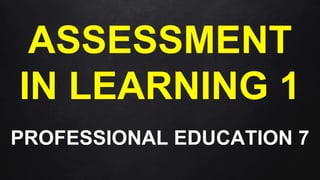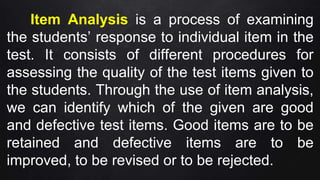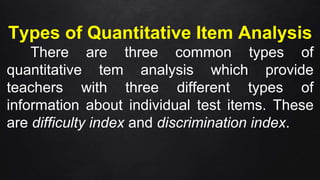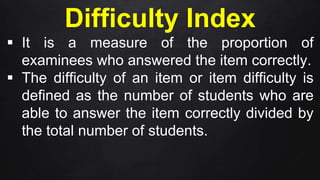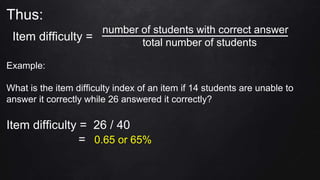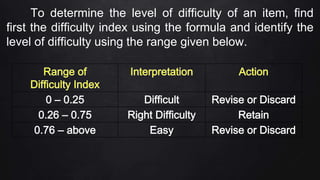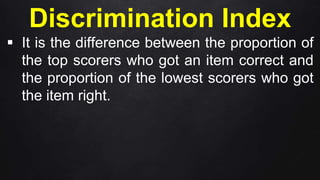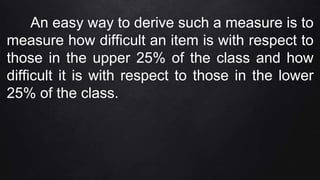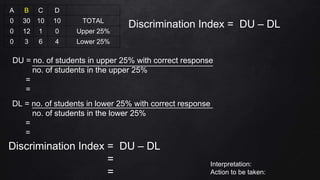This document discusses item analysis, which examines students' responses to individual test items. It aims to identify good and defective items. There are two main types of quantitative item analysis: difficulty index and discrimination index. Difficulty index measures the proportion of correct answers, while discrimination index measures the difference in difficulty between top- and bottom-scoring students. An example analysis is shown, calculating the difficulty index as 0.6 and discrimination index as 0.69 for an item. Based on these, the item is determined to be of appropriate difficulty level and discriminating, so it should be retained. The document also discusses validity and reliability of tests.
